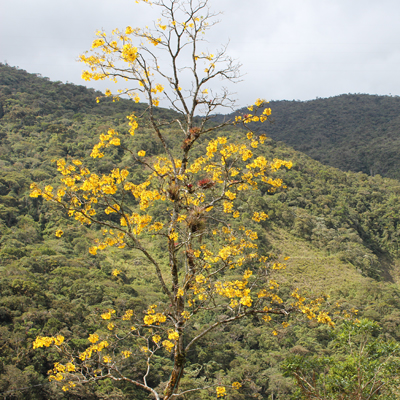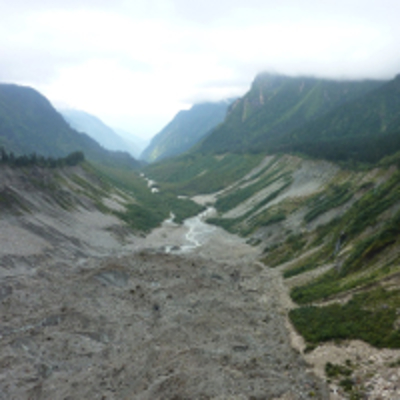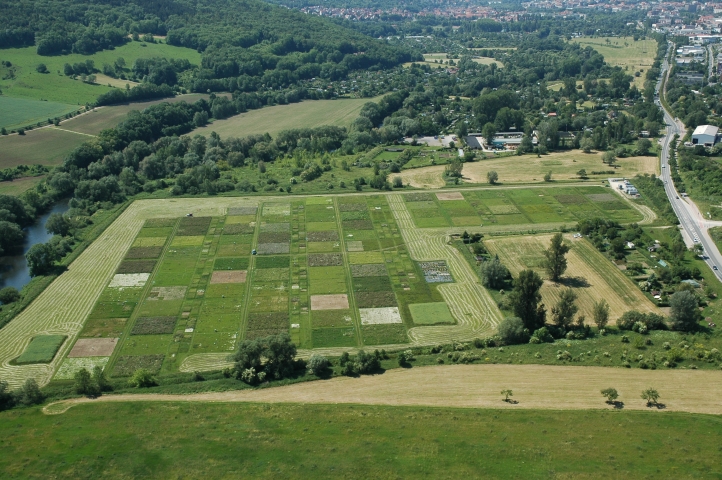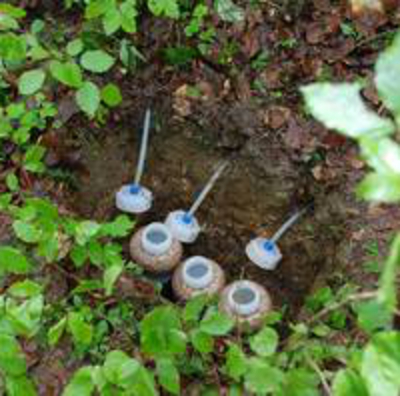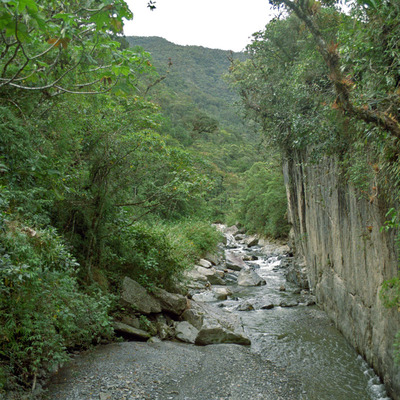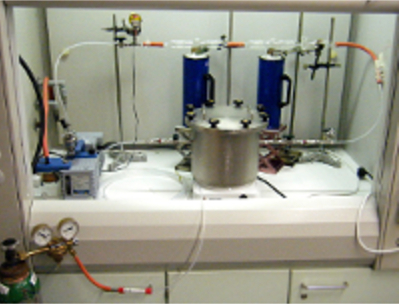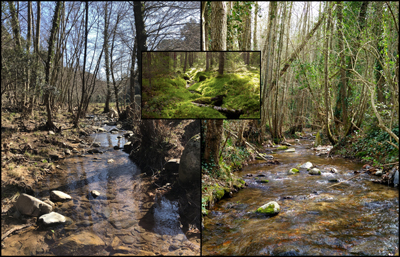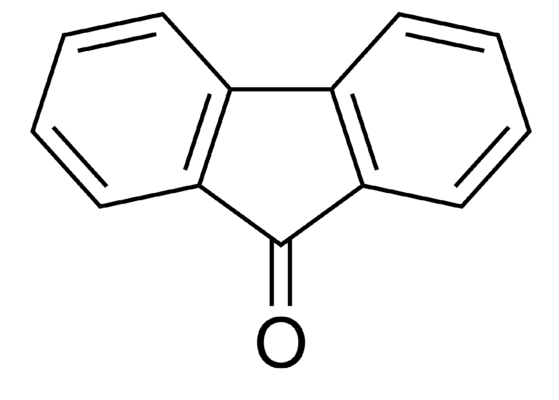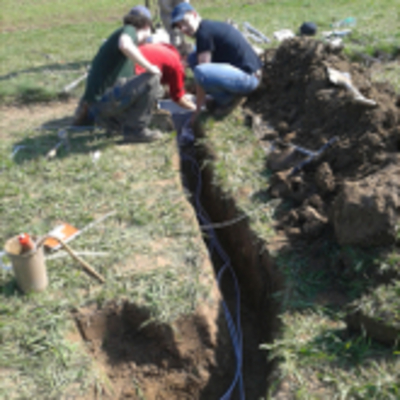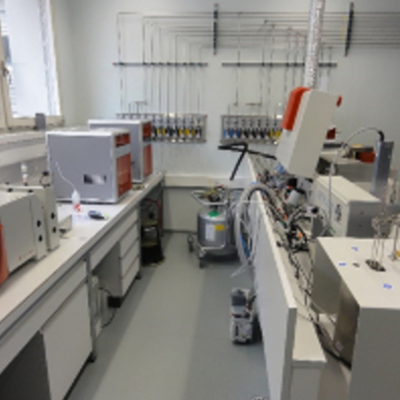Current Projects
Source Identification of OPAHS
Sources of Oxygenated Polycyclic Aromatic Hydrocarbons (OPAHs) in soils and aerosols: A compound-specific dual stable isotope ratio approach (DFG, WI 1601/32-1) -since 2024.
Ecuador - Environmental changes in biodiversity hotspot ecosystems
Nutrient supply as driver of biomass production and associated ecosystem water fluxes along a land-use and climate gradient (DFG, WI 1601/26-1, WI 1601/26-2). The project is part of the DFG Research Unit 2730 - Environmental changes in biodiversity hotspot ecosystems of South Ecuador: response and feedback effects (RESPECT). – Since 2018, second phase since 2021.
Our overall objective is to determine the impact of climate and land-use change in the Andes of Ecuador on key nutrient supplying processes (mineralization of organic matter and weathering of rock and soil) with the help of environmental gradients (from ca. 1000 to 3000 m a.s.l.) as surrogate for climate change and the effects of land-use change (from native forest to pasture and pine afforestation) by space-for-time substitution. Furthermore, we aim to test a method to estimate N mineralization rates with short-term incubations and a novel method to estimate nutrient supply by weathering, both based on the vertical distribution of stable isotope ratios of C and Ca in soils.
In the second phase, we include further core plots covering native dry forest and agroforestry at 600 and 1200 m a.s.l. We measure bulk deposition and estimate nutrient leaching from the canopy and the mineral soil. We determine N mineralization rates with a short-term incubation and by measuring the vertical distribution of δ13C values in soil. We quantify weathering rates by using open-system mass balances and by measuring the vertical distribution of stable Ca isotope ratios in soil as a novel potential indicator of weathering. We evaluate the depth of water uptake with the help of isotopically labeled water, the depth of N uptake with a 15N tracer, and the depth of K uptake with the help of Rb and Li. We determine the degree of microbial phosphate processing with a 18O-labeling approach as indication of the size of the microbial P pool, which is a major source of plant-available P.
Gongga, China - Mass budgets and stable isotope ratios of Ca and Mg in ecosystems
Mass budgets and stable isotope ratios of Ca and Mg in ecosystems along a 120 yr-old glacial retreat chronosequence in the subtropical Gongga mountains. Cooperation with Prof. Dr. Yanhong Wu, Institute of Mountain Hazards and Environment, Chinese Academy of Science, China. - Since 2017.
The stabilization of bare soil originating from glacial retreat by vegetation succession is crucial for reducing landslide, erosion, and water risks in mountainous areas. A major driver of the speed of vegetation establishment is the release of nutrients like Ca and Mg from the substrate by weathering and their transfer to the plants. We propose to determine the rates with which release from substrate and incorporation into biological cycling of Ca and Mg occur at a subtropical glacial retreat chronosequence with fast vegetation succession to a forest in less than 100 yr in China. Because processes like weathering, plant uptake, adsorption, or leaching are reflected by changes of the stable isotope ratios, we expect an improved process understanding by the simultaneous establishment of mass budgets and determination of stable isotope ratios of Ca and Mg.
Critical nitrogen concentrations
Scientific basis to determine the critical nitrogen concentrations in the soil solution ("critical limit", Ncrit) for the indicator plants of protected biomes. Subproject 2 of Lot 3 of the public announcement “Analysis and Evaluation of the Nitrogen Budget of Baden-Württemberg” (LUBW, 4500505575/23). This project is jointly conducted with Prof. Dr. Sebastian Schmidtlein (IFGG-KIT). We are cooperating with Dr. Markus Bernhardt (Friedrich Schiller University Jena) and Dr. Heike Puhlmann (Forest Research Institute of Baden-Württemberg, Freiburg). – Since 2017.
Xi'an, China - Transformations of PAHs and OPAHs
Transformations of polycycles (PAH) and oxy-polycycles hydrocarbons (OPAH) between the emission source and terrestrial sinks. Cooperation with Prof. Dr. Yongming Han, State Key Laboratory of Loess & Quaternary Geology, Institute of Earth Environment, Chinese Academy of Sciences in Xi’an. – Since 2011.
Jena Experiment
Effects of plant diversity on the soil nutrient cycle (SNF 200021E_131195/1) in the framework of the research unit “Exploring mechanisms underlying the relationship between biodiversity and ecosystem functioning“ (FOR1451) together with Prof. Dr. Yvonne Oelmann, University of Tübingen, Germany. – Since 2010.
Feedbacks of plant diversity on nutrient cycling in soil under grassland might occur after an initial period of establishment. We propose to elucidate the underlying processes of accumulation and enhanced release of N in soil with time as related to plant diversity and to monitor the biodiversity-N and P cycling relationships.
The Jena Experiment started back in 2002. Publicly available project data can be accessed via the data system Pangaea (keyword: Jena Experiment).
Biodiversity Exploratories
Element cycles in forests and grasslands of the biodiversity exploratories (BECycles): Response to management intensity and associated biodiversity (DFG, Wi1601/12-1) in the framework of the “Exploratories for functional biodiversity research“ (DFG, Special Program SPP 1374). Principal investigators Prof. Dr. Wolfgang Wilcke, Prof. Dr. Beate Michalzik, Friedrich Schiller University Jena, Prof. Dr. Martin Kaupenjohann, Berlin University of Technology, and Dr. Jan Siemens, Rheinische Wilhelms University Bonn. Interdisciplinary cooperation with many other subprojects of the Special Program SPP 1374. - Since 2009.
While it is already known that different land use types have strong impact on element cycles, consequences of differing management intensities on the same type of land use and associated biodiversity for element cycling in established real world ecosystems are still largely unknown. As a contribution to the elucidation of control variables of stable ecosystem functions and resulting ecosystem services, we examine water flows and nutrient cycling processes of different forest and grassland management systems varying in biodiversity in each of the three exploratories.
Ecuador - Response of element cycles to environmental change
Response of element cycles in a tropical mountain rain forest to environmental and land-use change. Project of the DFG Research Units 402 and 816 and of the Platform for Biodiversity and Ecosystem Monitoring and Research in South Ecuador. – Since 1998.
The Andean forest is affected by climate-driven acid and base depositions and will experience increasing N input in the future. Based on our knowledge of element cycling in the Reserva Biologica San Francisco, we aim at developing scenarios of possible responses of the study forest to expected environmental change. The developed scenarios will be validated by continuing the Long-term Ecosystem Study and the Nutrient Manipulation Experiment (NUMEX). The Long-term Ecosystem Study was established in 1998 and includes a unique data set of weekly records of all major water and element fluxes. In the interdisciplinary NUMEX experiment established in 2007, we continuously add N, P, N+P, and Ca to native forest in a block design at ca. 2000 m a.s.l. to explore the response of the forest to low-level nutrient input. We investigate the fate of added N in a 15N pulse chasing experiment.
Stable hydrogen isotopes
Stable hydrogen isotopes in soil constituents: New insights into the formation processes of organic matter and clay minerals (DFG, Wi1601/22-1). This project is a cooperation with Prof. Dr. Yvonne Oelmann (University of Tübingen). – 2017-2022.
The use of stable hydrogen isotope ratios (delta2H values) in soils has up to now been limited, because part of the H pool in soil exchanges with ambient humidity and does not carry a meaningful isotope signal. Clay minerals conserve the delta2H value of ambient water at the time of formation in structural OH. We propose to study (i) the incorporation of ambient water H into the nonexchangeable H fraction (C-H bonds) in SOM and the associated isotopic fractionation during decomposition (ii) whether the soil clay fraction can be used to determine the origin of a soil sample and for relative dating of argillic B (Bt) horizons of recent soils and palaeosols.
RIPARIONS - Developing a broad knowledge framework across ecoregions
Transferring hydrological and biogeochemical concepts from boreal to Mediterranean riparian zones (EU, H2020-MSCA-IF-2018-834363, Marie-Skłodowska-Curie) . Principal investigator: Dr. José L. J. Ledesma (IFGG-KIT), Superviser: Prof. Dr. Wolfgang Wilcke (IFGG-KIT). Cooperations with Dr. Susana Bernal (Spanish National Research Council), Dr. Andreas Musolff (Helmholtz Centre for Environmental Research, Germany) and Dr. Ryan Sponseller (Umeå University, Sweden). – 2020-2022.
In natural and semi-natural areas, freshwater quality is primarily determined by substances mobilized from the surrounding soils. The area of direct interaction between soils and surface waters, i.e., the riparian zone, is thus a pivotal landscape element. The project will test a novel conceptual framework on riparian zone function developed in boreal forest catchments in the markedly different temperate and Mediterranean forest environments. The framework includes the idea of a dominant source layer (DSL) within the riparian zone, a concept that explains timing and amount of solute transfer from soils to surface waters. The overall aim of RIPARIONS is to develop a unified knowledge framework on riparian zone function based on DSL hydrological and biogeochemical processes that can be implemented across different ecoregions and thereby support both scientific assessments and management of river networks.
OPAHs in the environment
Compound-specific stable isotope ratios (δ13C, δ2H) of oxygen-containing polycyclic aromatic hydrocarbons (OPAHs) as tracers of their formation in the environment: Method validation and case studies (DAAD P.R.I.M.E.). Cooperation with Dr. Ian Bull (School of Chemistry University of Bristol, UK). – 2016-2018.
MISOTRAG
Stable metal isotopes as tools to assess enrichment and sources of trace metals in soils and crops to improve sustainability of agricultural systems (MISOTRAG, SNF 406940_145195/1). The project was realized at the University of Bern, Switzerland and headed by Prof. Dr. Wolfgang Wilcke (IFGG-KIT) - 2013-2018.
Use of stable Cd, Cu and Zn isotope ratios to determine the sources of the accumulation and transformation of these metals in agricultural production systems and their uptake into crops. Project in the frame of the Swiss National Research Program NRP 69 (“Healthy Nutrition and Sustainable Food Production”) together with Prof. Dr. Emmanuel Frossard (ETHZ) and Dr. Armin Keller (Agroscope Reckenholz-Tännikon). In cooperation with Dr. Andreas Gubler (Agroscope Reckenholz-Tännikon) and Prof. Dr. Mark Rehkamper (Imperial College London).
BIOMETA
Investigating arsenic transformations in soils using isotopically labeled (13C and 2H) organo-arsenic compounds. Marie Curie IEF Fellowship BIOMETA (FP7-PEOPLE-2012-326736). The project was realized at the University of Bern, Switzerland and headed by Prof. Dr. Wolfgang Wilcke (IFGG-KIT) – 2013-2015.
Arsenic (As) is a ubiquitous element found in almost every environmental compartment. It is found in soils in inorganic forms and organic compounds. The process leading to these compounds, biomethylation, it is still not fully understood. Biovolatilisation leads to the production of highly volatile As compounds and their toxicity is still highly discussed. We employ a dual isotope approach, using 2H and 13C labeled methyl groups, placed on different methylated As molecules, to unravel As biomethylation & biovolatilisation pathways, to shed light on processes that lead to As molecules of varied toxicities and physico-chemical properties being released in soils. Thus, we can assess the threat of As pollution and the potential use of these processes as tools for soil remediation.







